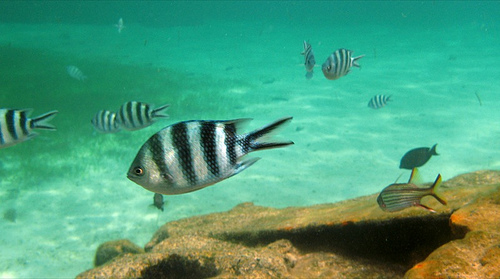Algal Toxins And Alzheimer’s
2Algal toxins are already nothing to mess with. Negative effects that they can have on people coming into contact with them include things like skin rashes, burns and blistering of the mouth. Long-term exposure is worse, netting impacts like liver failure in the case of Microcystis.
But it turns out that the long list of negatives doesn’t stop there. As researchers from the University of Miami and the Institute for EthnoMedicine found in a long-term study, toxins produced by blooming algae may very well contribute to Alzheimer’s disease in humans.
The toxin that they investigated is called BMAA — for beta-Methylamino-L-alanine — and was first cast under suspicion by villagers living in remote parts of Guam in the Pacific Islands. The inhabitants of small-town Chamorro had for decades been making tortilla shells with cycad seeds, which contain the neurotoxin. Once scientists made that determination, further testing was able to link the toxin consumption with a mysterious sickness afflicting Chamorro villagers.

Algae. (Credit: Flickr User Tristan Schmurr via Creative Commons 2.0)
Follow-up studies into the toxin’s effects involved using vervet monkeys as test subjects. In one such investigation, researchers gave one group of monkeys BMAA, while others got a mix of BMAA and an amino acid, and others received placebos.
The effects of this experiment revealed that all of the monkeys that had gotten straight BMAA treatments had brains filled with tangled up cells and amyloid plaque deposits. The placebo treatment group was unaffected, while the combination treatment group showed results similar to the BMAA group but with less severe changes in their brains.
After that study, researchers ran through repeat ones to see if they could replicate the results. And every time that they did, the results came out the same.

Algal bloom in Lake Erie’s western basin. (Credit: NASA)
Scientists involved with the work say that their findings make a big leap forward in showing causality in the realm of Alzheimer’s research. The tangles that they saw in the monkeys, in fact, were nearly identical to those found in the brains of Chamorro villagers who died from the Alzheimer’s-like disease impacting them. The study was one of the first to be able to intentionally produce tangles and plaques in the brains of animals.
BMAA toxin is believed to be produced by certain types of blue-green algae, or cyanobacteria. Full results of the study are published in the journal Proceedings of the Royal Society B.
Do you have expertise in BMAA research? What are other ways that algal toxins affect humans? Please consider leaving a comment to share your thoughts!














Could algal toxins also be what is causing sexual change in fish populations in NE?
Abstract from article http://pubs.acs.org/doi/abs/10.1021/es103538b-
“Microcystis blooms occur worldwide and threaten aquatic ecosystems and human health. Sublethal effects on early developmental stages of fish are largely unknown, and research has mainly focused on microcystin toxins (such as MC-LR) rather than Microcystis cells. We exposed (96 h) zebrafish larvae to purified MC-LR (0−1000 μg/L) or lyophilized Microcystis aeruginosacontaining 4.5 μg/L MC-LR and evaluated changes in global gene expression (Affymetrix GeneChip zebrafish genome arrays). Significant changes in gene expression (≥1.7-fold change, p100-fold on arrays; 619.3-fold confirmed by quantitative PCR) was observed in Microcystis-exposed larvae but not in larvae exposed to MC-LR. Up-regulation of vtg indicates exposure to estrogenic substance(s) and suggests that Microcystis may be a natural source of environmental estrogens. Concerns about effects of Microcystis blooms may extend beyond those associated with the microcystin toxin.”
http://news.nationalgeographic.com/2016/02/160203-feminized-fish-endocrine-disruption-hormones-wildlife-refuges/